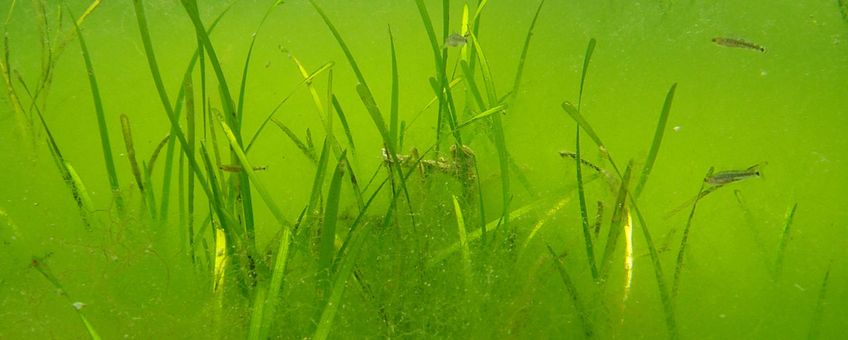
Restoring fish to combat coastal eutrophication
University of GroningenAcross Europe, the value of our coasts is suffering from declines in ecosystem services provided by important and valuable species. In the Wadden Sea, long lived and commercial fish species such as dab, sole, cod and whiting have decreased dramatically. These are all larger predatory fish, which have an important function in the coastal ecosystem. They control the abundance of smaller fish and crabs, which indirectly have a significant impact on vegetation and on algal blooms. At the same time, habitat-forming vegetation, such as eelgrass, has been declining. Eelgrass constitutes important habitats for marine organisms and acts as nursery grounds for many commercial fish species. However, eelgrass has largely disappeared from Dutch waters and decades of restoration efforts have failed.
Increased nutrient levels in the water, i.e. eutrophication, is one important cause of the decline of habitat-forming vegetation in Europe. Nutrients increase overgrowth of fast-growing often filamentous algae that smooth the larger vegetation. However, it has been suggested that also overfishing of large predatory fish, such as cod, have resulted in more overgrowth and declines of the larger vegetation through so-called trophic cascades. When the larger fish decrease, their prey of small fish and crabs are allowed to increase. This, in turn, causes a decrease in their prey of herbivorous invertebrates that eat filamentous algae, resulting in more overgrowth.
Researchers at the Swedish University of Agricultural Sciences, Stockholm University, University of Gothenburg, and University of Groningen in the Netherlands have now systematically reviewed over 50 experiments conducted in the North Atlantic that have manipulated nutrient levels, abundance of invertebrate herbivores and different types of fish, to estimate how nutrients and coastal animals affect fast-growing ephemeral algae.
The results show that nutrients, mainly nitrogen, and predation from crabs and small fish on herbivorous invertebrates have similar positive effects on the growth of algae. Small fishes and crabs have increased in the coastal zone as a result of overfishing of large predatory fish that normally eat and control them. The implication is that weak stocks of predatory fish can have similar effects on blooms of filamentous algae as eutrophication.
A conclusion of this study is that measures aiming to restore commercial stocks of larger fish or reducing small fish and crabs could relatively quickly reduce the abundance of ephemeral algae and thereby benefit underwater vegetation such as eelgrass. Thus, a more natural fish community can contribute to both better water quality and healthier habitats in coastal areas, which highlights the advantages of an integrated, ecosystem-based management of coastal areas.
Text: Britas Klemens Eriksson, University of Groningen, Johan Eklöf, Stockholm University and Per-Olav Moksnes, University of Gothenburg
Photo: Per-Olav Moksnes (leadphoto: ephemeral algae in eelgrass)
